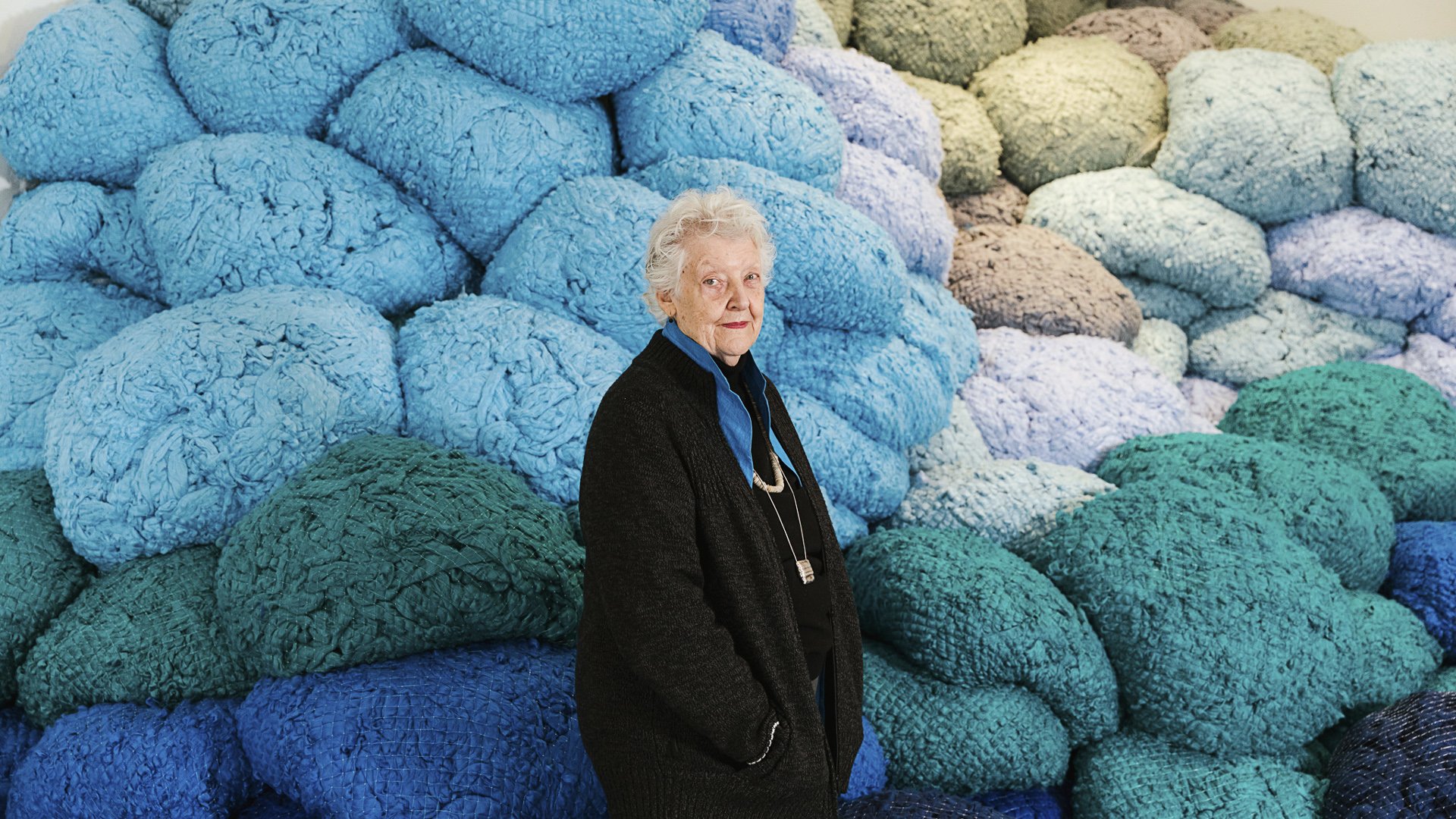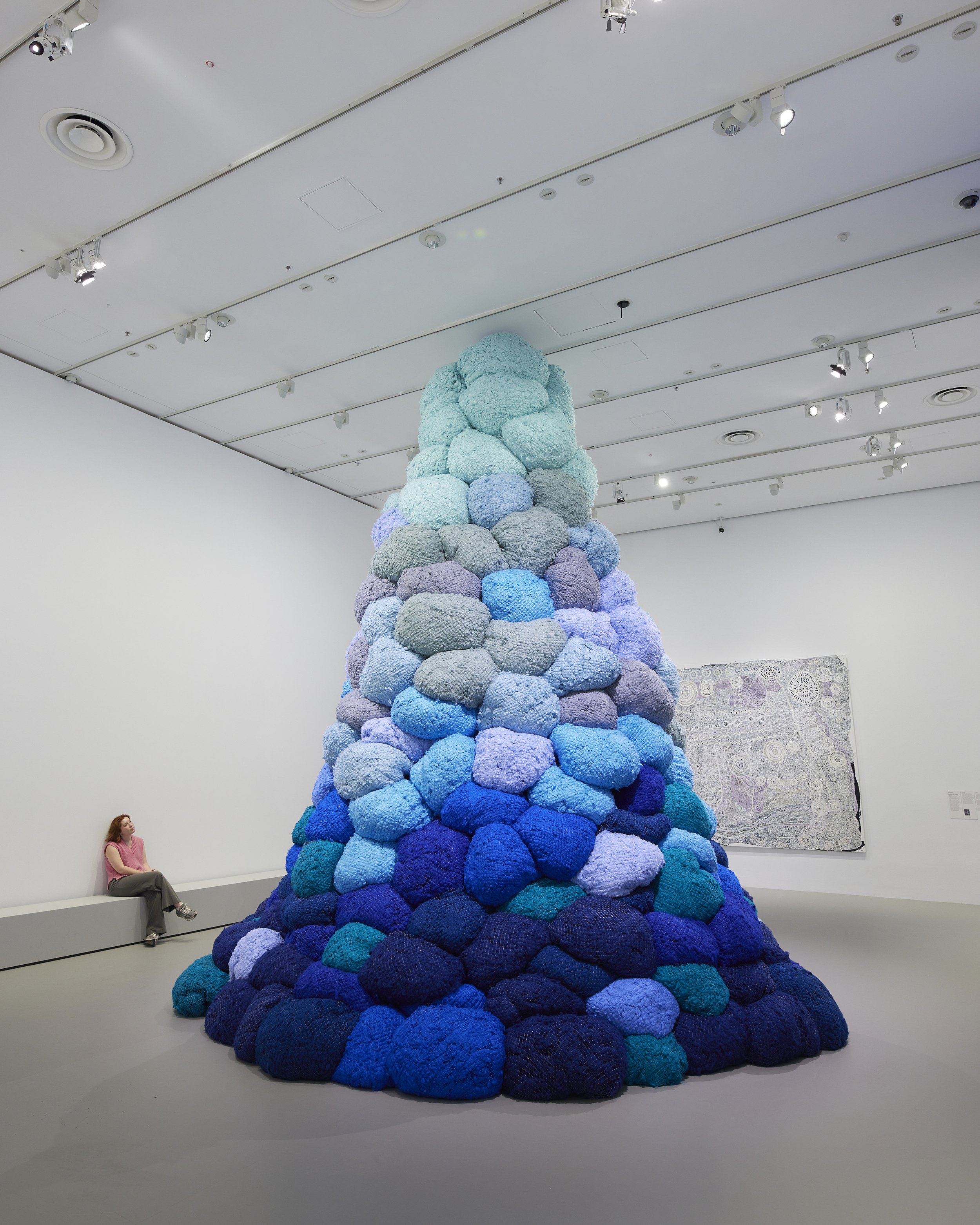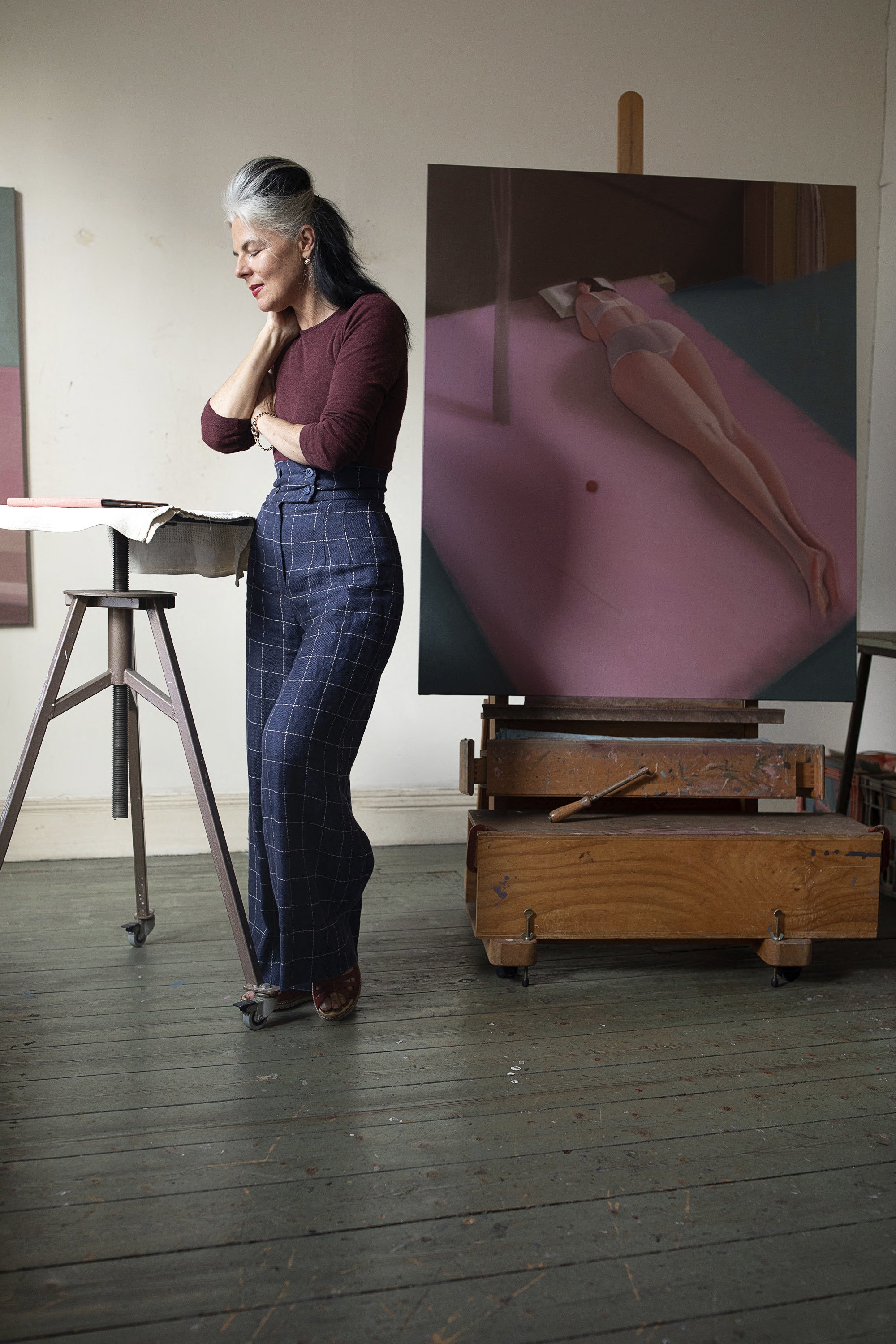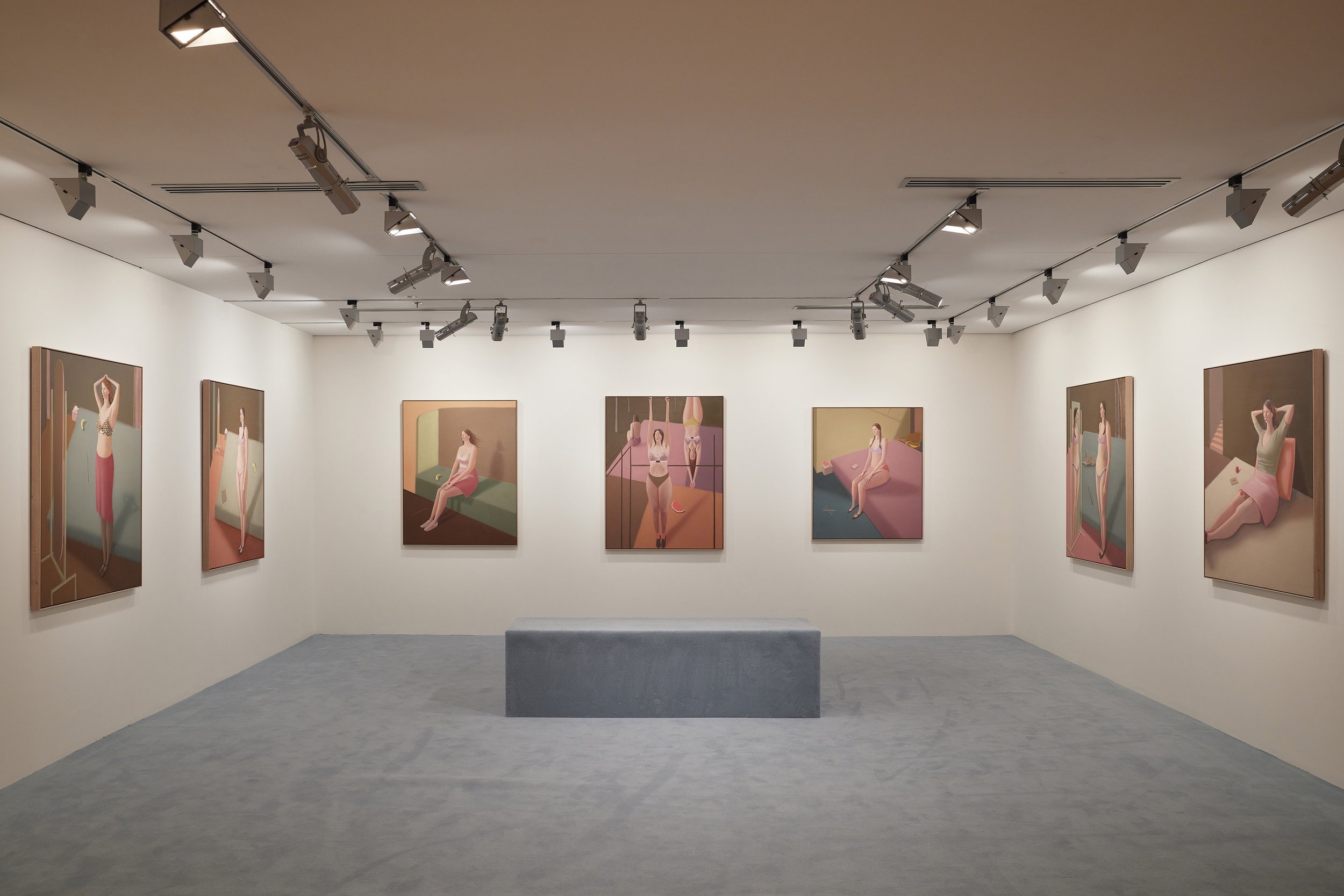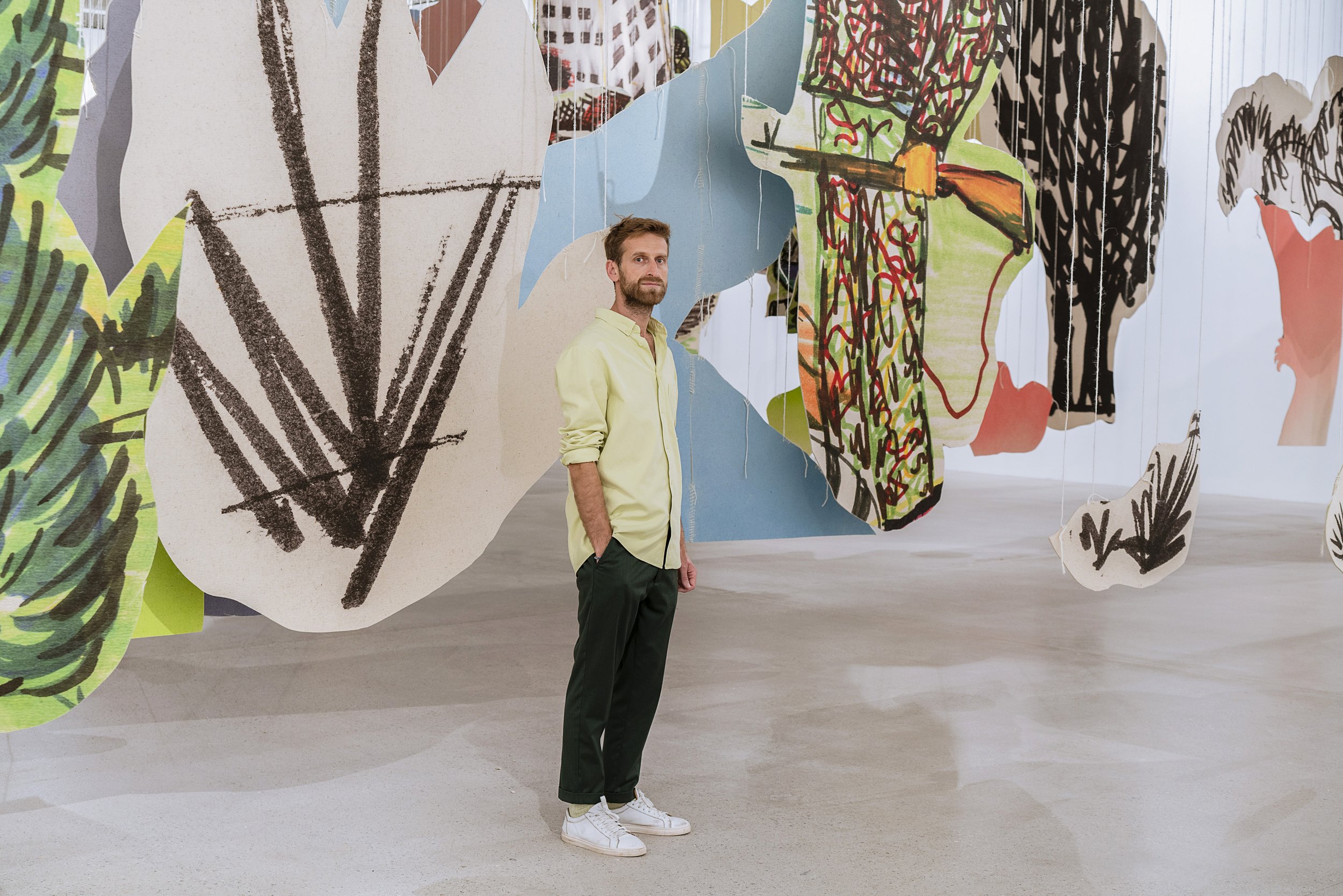Inside and out: Notions of interiority at the NGV Triennial
/The third NGV Triennial showcases international and local art, featuring new pieces alongside the National Gallery of Victoria’s permanent collection. Stemming from the curatorial prompt of ‘Magic, Matter and Memory’, the third NGV Triennial features more than 100 artists and interacts skillfully with the National Gallery of Victoria’s permanent collection.
The NGV Triennial features a range of international and local artists whose work spans installations, sculpture and portraiture, highlighting the interior and exterior elements of the human experience as well as the gallery’s architecture. Crucially, in an exhibition featuring the likes of Tracy Emin and Yoko Ono, the voices of local female artists are no less strong and no less resonant, and provide a piercing snapshot of the inner lives of the artist and the subject in time, space and dreams.
Prudence Flint’s series ‘Hunting and Fishing’ (2023) depicts the Melbourne artist’s feminist interiors. Interestingly, the curators positioned the meditative portraits in Flint’s signature pastel tones amidst the ruminative portraits of the Dutch Masters, thought to symbolise the birth of the individual subject in modern European life. It’s a juxtaposition Flint finds apt, as well as flattering. ‘I had no idea how it was going to look,’ remembers Flint. ‘They came to me about three years ago and told me I was going to be put in the Dutch Master’s section. The carpet hadn’t been put down and I really loved it. I thought the paintings looked beautiful there.’
Flint cites portraits like A Fine Romance (2005) which depicts a female painter sitting in front of an easel, as having the mirror-like effect of individual self-discovering, speaking not only of the self’s invention but what she calls ‘a sense of underplayed violence and implied threat.’
In the work of Kosovan artist Petrit Halilaj, the process of invention involves transforming war to whimsy. ‘The catalyst of Very volcanic over this green feather (2021),’ explains Halilaj, ‘was a series of drawings I made while I was living in a refugee camp during the Kosovo War (1989–99). I wasn’t able to go back to them until 2021, when I created the exhibition for Tate St Ives. So, this project emerged as an intimate response to particular events such as war and displacement. It was a reaction, not a discovery. Through time, I found art to be a potent tool for empowering through memory. Art gives me a sense of being able to alter the course of my personal history, and by consequence, that of collective ones.’ Indeed, the NGV Triennial can be seen as a historical document of how art practice contributes to collective histories.
Halilaj’s drawings are blown-up in size and hung in the centre of the gallery. The installation leaves a series of gaps and open spaces where people can walk amongst and interact with the images of birds, trees and people; depictions that reflect a distressing period in Halilaj’s war-torn childhood. ‘How do you translate your experiences once you lose a sense of home and then you have to invent your way of being in the world?’ Halilaj asks rhetorically as I speak to him one evening. ‘I made this series of drawings when I was 13, when an Italian psychologist arrived at the camps and asked us kids to express our memories and experiences with felt-tip pens. I have always drawn a lot, but in that context, drawing became a tool for survival. I drew the images that were sculpted in my mind. Most of them depicted scenes from the war I had witnessed or heard of. Others were my way to escape that situation, like a bird. I watched these flying beings and imagined doing the same, someday. The birds in my drawings are usually very colorful, extravagant creatures. They represent memory and the possibility for a better future.’
From the psychological interiors of the female experience to the creative rendering of one child’s experiences of war, the NGV Triennial represents a range of landscapes and dreamscapes, which turn matter, memory and subjects inside and out. Nowhere is this question of interiority and exteriority grappled with more thoroughly than in Sheila Hicks’s sculpture Nowhere to go (2022). A doyenne of modern feminist sculpture, Hick’s masterfully alludes to the ways in which textile arts can be a metaphor for lived experience; threads woven through and strengthened to speak of resilience, invention and the spaces inside and between us. Nowhere to go could be a landscape or a dreamscape and you can imagine yourself inside it as well as around it, an experience Hicks credits to the immersive nature of her practice.
Hicks sees her subject in bold terms as ‘building the future.’ She describes how ‘when people walk into the room, they lift their eyes and their chin and look upwards and then they scan and build colour and form. There’s so much going on in the world today that drags us downwards, so I like to keep looking upwards. My sculpture is additive, not subtractive. When I get to the top I keep going up. Each person has the privilege of seeing it in their personal way. But I’m adding to the history of art as I see it and I’m trying to be uplifting.’
The third NGV Triennial is rich with the possibilities of uplift. From feminist subjectivity to refugee stories extending hospitality in an existing museum space, the pieces featured in this exhibition show how art can take you everywhere, from places inside yourself to parts of the world where you’ve never travelled. These three artists prove that with bold colours, new perspectives and interesting compositions, the past and the present, memory and magic can interact symphonically and enrich our understanding of why art matters.
Vanessa Francesca, Naarm/Melbourne
The ‘NGV Triennial’ is on display at the National Gallery of Victoria until 7 April 2024.

